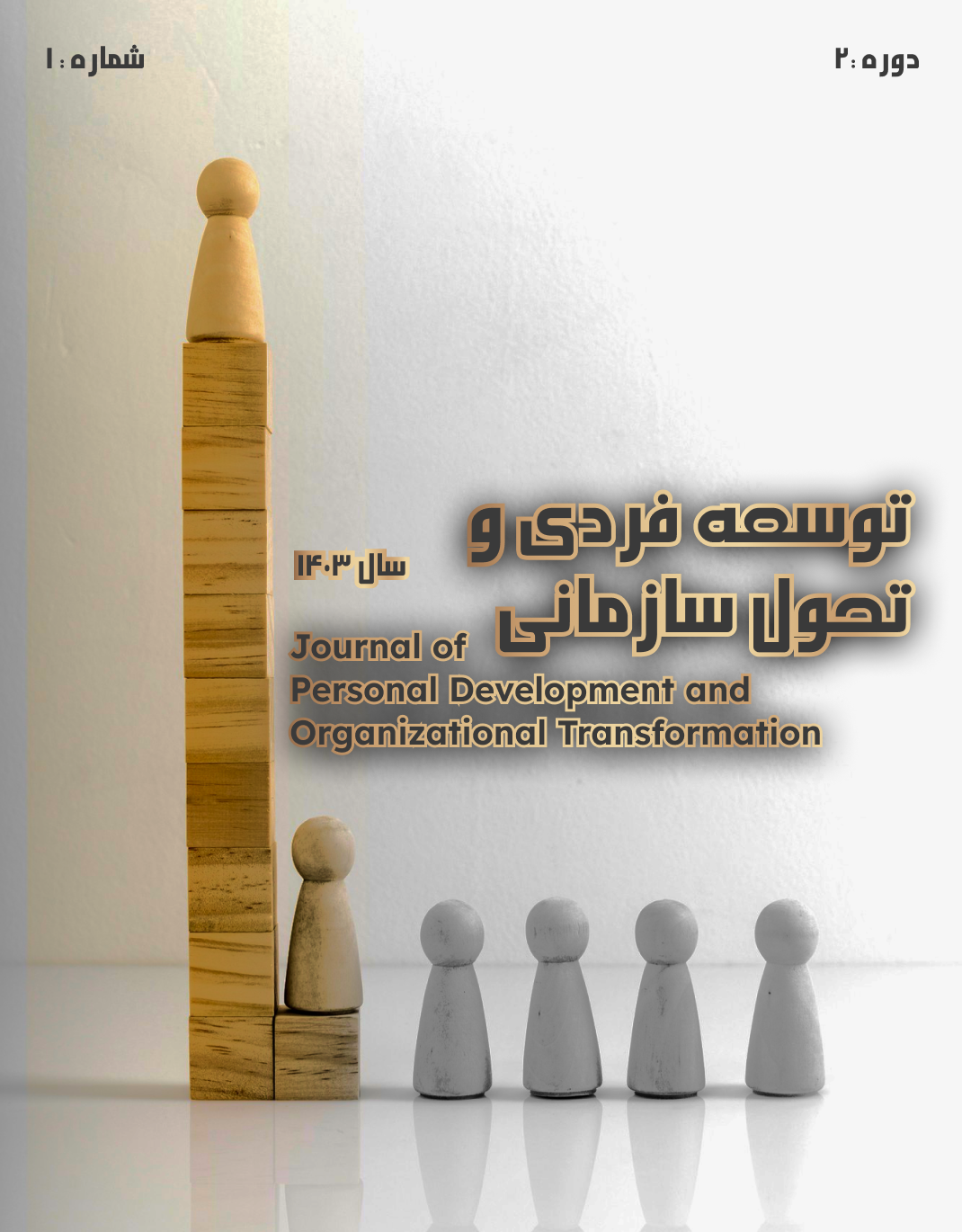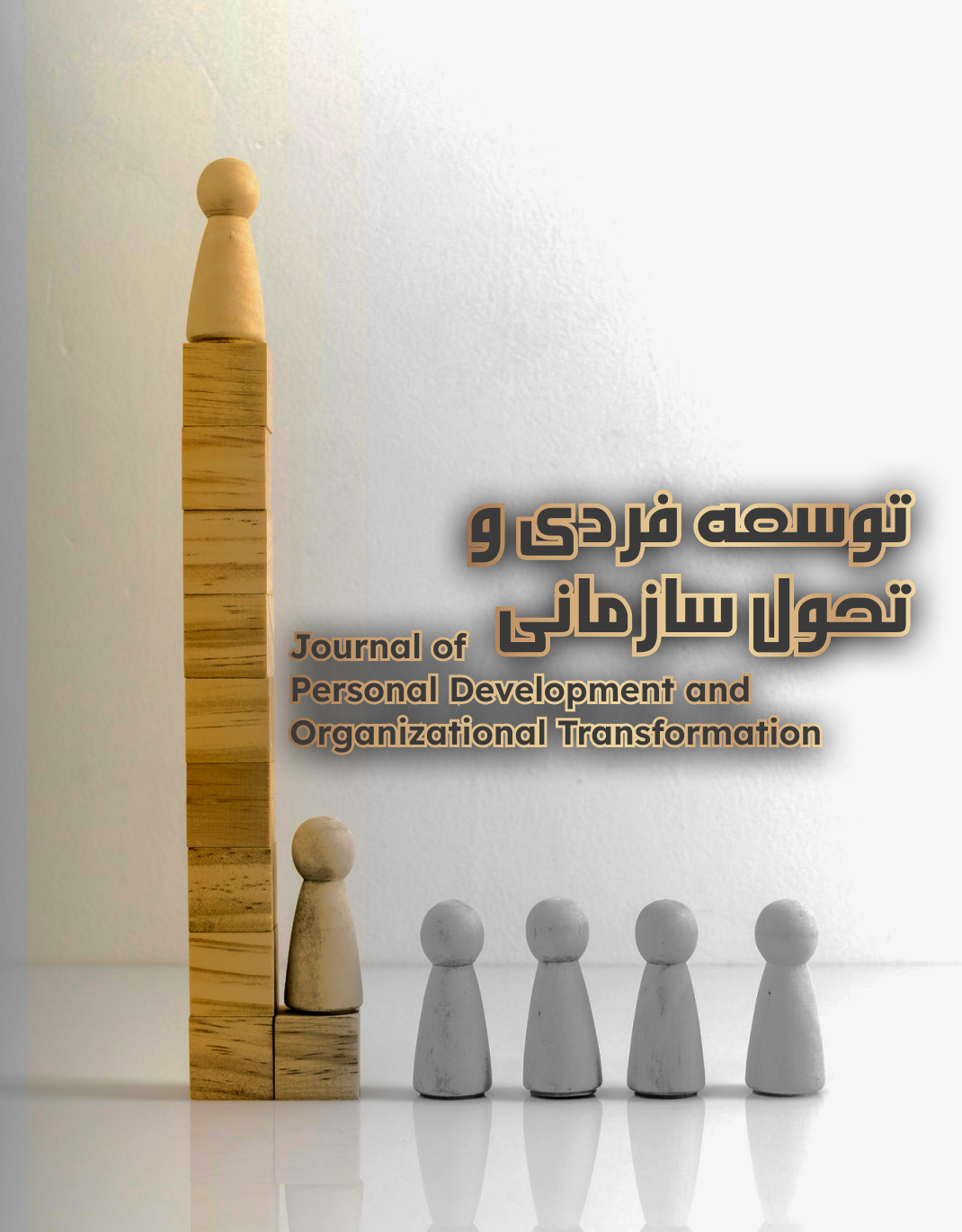طراحی مدل قصد استراتژیک سبز در شرکتهای تولیدی(مطالعه موردی: شهر مشهد)
کلمات کلیدی:
قصد استراتژیک سبز, صنایع تولیدی, گراندد تئوری, توسعه پایدار, مدیریت زیستمحیطیچکیده
هدف پژوهش حاضر، طراحی یک مدل مفهومی برای تبیین قصد استراتژیک سبز در شرکتهای تولیدی با تمرکز بر شهر مشهد است. این مطالعه از نوع کاربردی و با رویکرد کیفی و راهبرد نظریه دادهبنیاد انجام شد. دادهها از طریق مصاحبههای نیمهساختیافته با 30 نفر از خبرگان دانشگاهی و مدیران صنایع تولیدی مشهد جمعآوری گردید. نمونهگیری به روش گلولهبرفی و هدفمند انجام شد و تحلیل دادهها در سه مرحله کدگذاری باز، محوری و گزینشی مطابق با الگوی استراوس و کوربین صورت گرفت. همچنین برای اعتباربخشی مدل نهایی، از تکنیک دلفی فازی استفاده شد. نتایج نشان داد که قصد استراتژیک سبز به عنوان پدیده محوری تحت تأثیر شش بعد عمده شامل شرایط علّی (مانند تعهدات سبز و مسئولیت اجتماعی)، شرایط زمینهای (نظیر فرهنگ سازمانی و مشارکت دولت و جامعه)، شرایط مداخلهگر (تأمین مالی، تأثیر اجتماعی شرکتها)، راهبردها (تولید محصولات سبز و مدیریت زنجیره تأمین)، و پیامدها (تحقق توسعه پایدار، نوآوری و منابع انسانی) قرار دارد. در مجموع 72 شاخص کلیدی شناسایی و تأیید شدند. مدل ارائهشده میتواند به مدیران شرکتهای تولیدی در اتخاذ استراتژیهای سبز کمک کند و بستر تصمیمگیری برای گذار به تولید پایدار را فراهم آورد. این مدل ضمن شناسایی عوامل اثرگذار، امکان تدوین برنامههای اجرایی برای تقویت قصد سبز در سطح سازمانی را فراهم میسازد.
دانلودها
مراجع
Anil, N., Sharifi Khobdeh, M., Oksoy, A., Guldiken, O., & Chris, H. W. (2022). A review of strategic management research on India. Asia Pacific Journal of Management. https://doi.org/10.1007/s10490-022-09820-1
Aragon-Correa, J. A., Marcus, A. A., Rivera, J. E., & Kenworthy, A. L. (2017). Sustainability management education teaching resources and the challenge of balancing planet, people, and profits. Academy of Management Learning & Education, 16, 469-483. https://doi.org/10.5465/amle.2017.0180
Aragón-Correa, J. A., & Sharma, S. (2003). A contingent resource-based view of proactive corporate environmental strategy. Academy of Management Review, 28(1), 71-88. https://doi.org/10.5465/amr.2003.8925233
Bae, H. S. (2017). The effect of environmental capabilities on environmental strategy and environmental performance of Korean exporters for green supply chain management. Asian Journal of Shipping and Logistics, 33, 167-176. https://doi.org/10.1016/j.ajsl.2017.09.006
Borland, H., Ambrosini, V., Lindgreen, A., & Vanhamme, J. (2016). Building theory at the intersection of ecological sustainability and strategic management. Journal of Business Ethics, 135(2), 293-307. https://doi.org/10.1007/s10551-014-2471-6
Bosko, J., Aleksandar, C., & Danilo, F. (2021). Strategic Environmental Assessment and the precautionary principle in the spatial planning of wind farms - European experience in Serbia. Renewable and Sustainable Energy Reviews, 136, 110459. https://doi.org/10.1016/j.rser.2020.110459
Brulhart, F., & Gherra, S. (2015). Stratégie environnementale proactive, compétences naturelles, et performance économique: une approche par la théorie des ressources et compétences. Management International, 20, 94-113. https://doi.org/10.7202/1045358ar
Buysse, K., & Verbeke, A. (2003). Proactive environmental strategies: A stakeholder management perspective. Strategic management journal, 24, 453-470. https://doi.org/10.1002/smj.299
Chen, A., & Roberts, N. (2024). Joint drivers of different shades of green IT/IS practices: a strategic cognition perspective. Information Technology & People, 37(3), 1103-1125. https://doi.org/10.1108/ITP-07-2022-0562
Chen, Y. S., Chang, C. H., & Lin, Y. H. (2020). Green transformational leadership and green performance: The mediation effects of green mindfulness and green self-efficacy. Sustainability, 12(4), 1610. https://doi.org/10.3390/su12041610
Dangelico, R. M., & Vocalelli, D. (2017). Green marketing: An analysis of definitions, dimensions, and relationships with stakeholders. Business Strategy and the Environment, 26(4), 457-475. https://doi.org/10.1002/bse.1939
Haqiqi Nasab, M., Yazdani, H. R., & Davarpanah Kiasravi, F. (2016). The impact of top management support for environmental initiatives on green marketing strategy and environmental performance of industrial businesses in Iran. Modern Marketing Research, 6(1), 24-38. https://nmrj.ui.ac.ir/article_20652.html
Hashemi, S. I., Khosravi Fard, S., Gorgiz, P., & Niamir, A. (2006). An introductory familiarity with environmental assessment. Tehran: Rah Shahr Publishing and Printing.
Hassan-Zadeh, M. R., Bagheri, M., & Tahmasbi, F. (2022). Investigating the barriers to implementing environmental strategies in manufacturing industries in Iran. Quarterly Journal of Industrial Management, 14(1), 25-44.
Iranmanesh, A. (2012). Investigating the relationship between market orientation, learning orientation, and innovation with market performance of small and medium-sized manufacturing companies in Isfahan Province. Proceedings of the First Regional Conference on Innovative Research and Solutions in Accounting and Management, https://civilica.com/doc/190097/
Leonidou, L. C., Christodoulides, P., Kyrgidou, L. P., & Palihawadana, D. (2017). Internal drivers and performance consequences of small firm green business strategy: The moderating role of external forces. Journal of Business Ethics, 140(3), 585-606. https://doi.org/10.1007/s10551-015-2670-9
Massaro, M., Dumay, J., Garlatti, A., & Dal Mas, F. (2018). Practitioners' views on intellectual capital and sustainability. Journal of Intellectual Capital, 19(2), 367-386. https://doi.org/10.1108/JIC-02-2017-0033
Mirhashemi, S., Ghasemi, M., & Khodadadi, M. (2019). The role of managerial environmental beliefs in the development of green strategies in manufacturing firms. Environmental Management Journal, 21(3), 43-56.
Moghadam, M., & Varshosaz, K. (2014). Developing an environmental strategy focusing on a three-stage analytical framework. Proceedings of the First National Conference on Environmental Health, Health, and Sustainable Environment, https://civilica.com/doc/304473/
Mohammed, A. A., & Fisal, M. Z. (2023). The nexus between green human resource management processes and the sustainability of educational institutions: the mediating effect of strategic excellence. Journal of Applied Research in Higher Education, 15(4), 947-965. https://doi.org/10.1108/JARHE-12-2021-0443
Moini Olav, J., Hamid, S. E., & Szuchy, K. (2014). Adoption of green strategy by Danish firms. Sustainability Accounting, Management and Policy Journal, 5(2), 197-223. https://doi.org/10.1108/SAMPJ-01-2013-0003
Nuwan, G., & Lee, K. (2021). Corporate cleaner production strategy development and environmental management accounting: A contingency theory perspective. Journal of Cleaner Production, 308, 127402. https://doi.org/10.1016/j.jclepro.2021.127402
Padasht, A., Seyed Mohammad Baqer, N., Behrooz, D., Jozai, S. A., & Nabiollah, M. (2019). Strategic planning for environmental protection development in marine protected areas (Case study: Mond Protected Area, Bushehr Province). Environmental research, 1(1), 53-66. https://www.sid.ir/paper/192343/fa
Pillania, R. (2014). Green management: The state of practice, research, teaching, training and consultancy. Journal of Management Development, 33(2), 131-148. https://doi.org/10.1108/JMD-12-2013-0157
Pumiviset, W., & Suttipun, M. (2024). Sustainability and strategic management accounting: evidence of green manufacturing in Thailand. Cogent Business & Management, 11(1), 2302794. https://doi.org/10.1080/23311975.2024.2302794
Rahimnia, F., Islami, Q., & Ghaderi, F. (2019). Investigating the impact of green human resource management strategy on export performance through competitive advantage. International Business Management, 2(4), 73-96. https://ensani.ir/fa/article/432956/
Secundo, G., Massaro, M., Dumay, J., & Bagnoli, C. (2018). Intellectual capital management in the fourth stage of IC research. Journal of Intellectual Capital, 19(1), 157-177. https://doi.org/10.1108/JIC-11-2016-0113
Shafiei, N., & Mazroei, S. (2023). Investigating the effect of green intellectual capital on service performance with the mediating role of strategic capabilities of human resources in educational institutions. Management and Entrepreneurship Studies, 45(9). https://civilica.com/doc/1901644/
Talashi, M. S. A., Nejad Kourki, F., Azimzadeh, H. R., & Ghaniyan, M. T. (2015). Green management strategy for energy systems, wastewater, and air pollution control in educational hospitals in Yazd City in 2013. Health System Research, 11(4), 775-780. https://www.sid.ir/paper/192452/
Tariq, A., Badir, Y. F., Tariq, W., & Bhutta, U. S. (2017). Drivers and consequences of green product and process innovation: A systematic review, conceptual framework, and future outlook. Technology in Society, 51, 8-23. https://doi.org/10.1016/j.techsoc.2017.06.002
Tayebi Abolhasani, S. A. H., & Rahman Nasrat, H. (2020). The impact of strategic flexibility on green management for corporate competitiveness considering the role of organizational legitimacy and institutional support. Public Management Research, 13(48), 27-57. https://jmr.usb.ac.ir/article_5775.html
Wang, X., Zhang, L., & Wang, W. (2018). Strategic green marketing orientation and firm performance: A resource-based perspective. Journal of Cleaner Production, 180, 86-95. https://doi.org/10.1016/j.jclepro.2018.01.127
Wu, Q., He, Q., Duan, Y., & Regan, N. (2012). Implementing dynamic capabilities for corporate strategic change toward sustainability. Strategic Change, 21, 231-247. https://doi.org/10.1002/jsc.1906
Yang, Y., Xu, H., Wang, J., Liu, T., & Wang, H. (2021). Integrating climate change factor into strategic environmental assessment in China. Environmental Impact Assessment Review, 89, 106585. https://doi.org/10.1016/j.eiar.2021.106585
Zarei Dizaj, A., Ramazani, M., Sangin Noorpoor, A., Behlouli, N., & Eskandari, K. (2022). Strategic human resource management techniques and their implications for sustainable development. Journal of Executive Management Research, 14(28), 255-287. https://jem.journals.umz.ac.ir/article_4042.html
Zhu, Q., & Sarkis, J. (2006). An inter-sectoral comparison of green supply chain management in China: Drivers and practices. Journal of Cleaner Production, 14(5), 472-486. https://doi.org/10.1016/j.jclepro.2005.01.003
دانلود
چاپ شده
ارسال
بازنگری
پذیرش
شماره
نوع مقاله
مجوز
حق نشر 2024 Mohammad Reza Sarani Matin

این پروژه تحت مجوز بین المللی Creative Commons Attribution-NonCommercial 4.0 می باشد.







